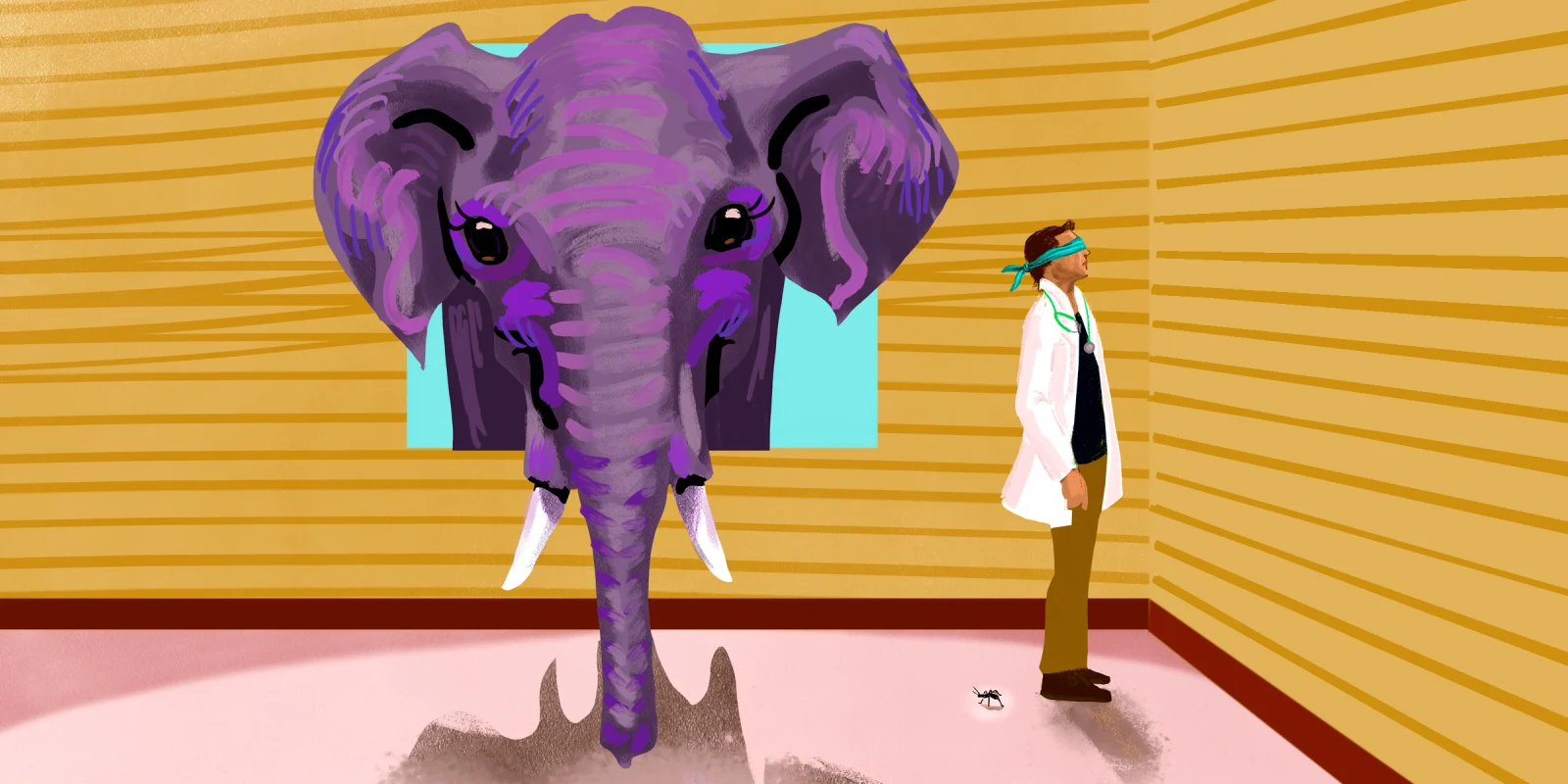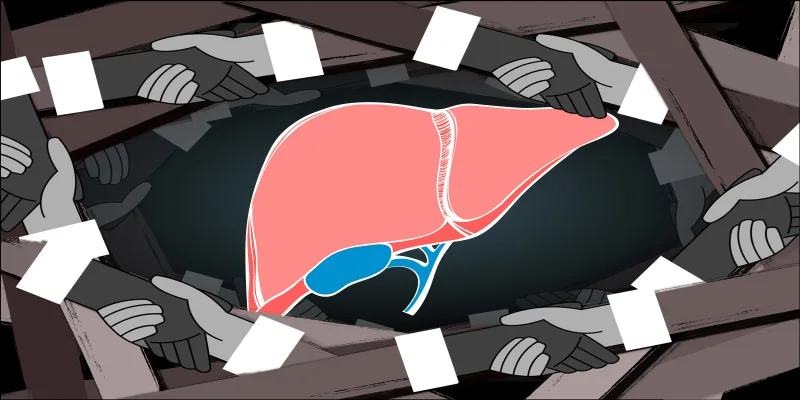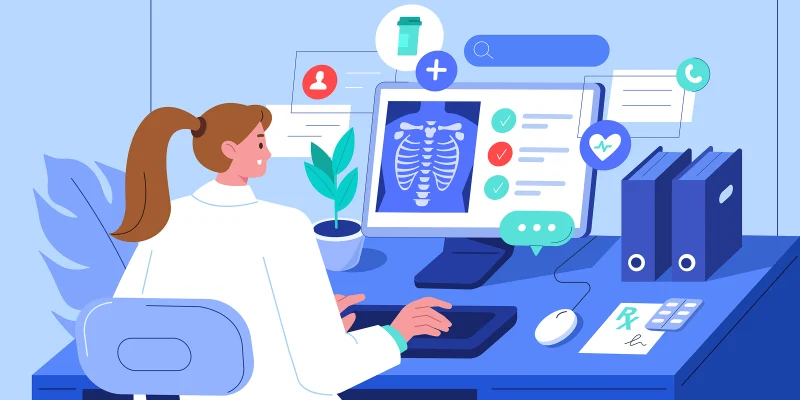Several years ago, by chance, I bumped into my neighbor, Barb, as we were both checking our mailboxes. She looked troubled, so I initiated a conversation with her. She told me that her mother, who lives with her, was recently put in hospice. I was shocked. I was accustomed to seeing Barb’s mom patrolling the neighborhood, chasing away door-knocking charlatans and political canvassers. She has the reputation of being a neighborhood busybody.
Barb told me that her mom has a history of breast cancer, and that she had recently been hospitalized for community-acquired pneumonia. (It could have been an early case of COVID-19, as this was around January 6, 2020). During her hospitalization, Barb’s mom got a chest CT with contrast, which showed big enhancing lesions in her liver. Her doctors decided that she had liver metastases, and after she fully recovered from pneumonia, they sent her to hospice.
Barb seemed to be sad, but calm about her mom’s condition. She said they prayed together a lot, and that her mom’s state of mind was of acceptance. She wanted to be a model hospice patient. “It is a relief to not have all those oncology visits and surveillance scans anymore,” she said.
However, something about Barb’s story felt hazy to me, because my very recent mental picture of Barb’s mom was that of a lively, colorful, and energetic lady, who was an actress in the community theater.
At the end of a long work day the next week, in a weakened state of mind, I decided to call Barb’s mom at the hospice facility. She was definitely settling into the role of a hospice resident; she had already made friends with all the other residents and the staff. She was doing hospice yoga and was very equanimous, but more subdued than I was used to. She even said, “It was a blessing to find this place, it's so much more relaxing compared to the busyness of the hospital.”
I asked about her prior medical history, and Barb’s mom confirmed that her cancer was in remission on her most recent outpatient workups prior to her hospitalization, but luckily, they picked up the scary liver lesions on a hospital CT. For some reason, I asked her permission to look into this a bit more, and Barb’s mom sounded like she thought I was crazy for over-questioning reality. “You don't have to do that,” she said. Still, she acquiesced.
I contaminated Barb’s reality with my skepticism, and that forced her into detective mode. She had to spend a lot of time waiting on the phone and driving to the inpatient imaging center, and after a week or two, she got her mom’s inpatient CT images on a CD. I uploaded these to our facility and compared the previous outpatient scans directly to the more recent and alarming inpatient scan.
Barb’s mom’s CT indeed did show multiple, big enhancing liver lesions that looked quite scary. The inpatient facility did not have her older scans, so the radiologist who read her CT included metastatic disease as a part of the differential.
When I compared her inpatient CT to many of her previous studies, I saw that these big lesions had been stable for many years, going back to when she started cancer surveillance. Her prior studies were also performed with multiphasic enhancement, which is better at characterizing the liver. Based on all of the CT exams together, it was obvious that the lesions were benign, stable liver hemangiomas, and not metastatic disease. After consulting with Barb, and her mom’s doctors, everyone agreed that Barb’s mom’s prognosis was very good.
There followed a lot more paperwork, meetings, and phone calls for Barb, in order to undo what was done, but eventually, Barb’s mom was discharged from hospice, and she left her peaceful room and her little hospice community. I quietly wondered how she was going to explain this to her many Facebook followers. I also wondered if, had we not investigated this incident, she would have ended up being the longest surviving hospice resident, living an ethereal life as a reverse ghost, while everyone else died around her.
A while later, I had a chance to review Barb’s mom’s CT with the radiologist who had provisionally diagnosed her with metastatic disease. I knew it was going to be unpleasant for me, as he was senior to me, and had a good reputation in the community. He’d even been voted “Top Doc” in a local magazine. He showed no contrition, or even emotion, and I expected none.
“Metastatic disease is in the differential for enhancing liver lesions on a chest CT, and this diagnosis of metastases is within the standard of care,” he told me. He was right, and he was polished. If he wasn’t already a doctor, he could play one on TV. Everyone involved in this incident had good intentions for Barb’s mom. They were all being professional, yet she fell through a gap in the system. I have heard this same radiologist teach people, “Treat the patient, don’t treat the radiology study.” Good advice, yet a few speculative words whispered in the right place can make one forget good advice and can change a person’s world.
Barb and her mom are doing great now, although I don’t think they pray as much anymore. Mom has returned to the community stage, and she has even remarried, going from hospice resident to newlywed. I was invited to her birthday party recently. She made everyone toast me for being her “hero.” Actually, I felt very uncomfortable with all that, because heroism is the opposite of what I feel about this incident. So I deflected the credit to Barb, who had done all the legwork. “She is my Sancho Panza!” I announced. (They didn't get the joke.) Barb’s mom even encouraged the partygoers to vote for me for “Top Doc.” So after a bunch of fake smiles, I hopped on Rozinante and exited stage left.
Barb’s mom’s story evokes in my mind an often quoted cliche in medicine: the blind men and the elephant. Except I don’t think we are blind as much as we are blindfolded. It takes a lot of strength to remember that we physicians may not see all of reality, even if we have MRI and CT, because we are the experts. It takes way too much effort to peek around your blindfold because we need help to do that and we are trained to be individualists. So, as a blindfolded person with X-ray vision, I go forth wondering if this is an elephant’s back or a wall, but I also wonder if anyone knows if the elephant is alive at all.
Have you encountered cases where the initial diagnosis or prognosis differed from your own? Share your experiences in the comment section.
Jimmy Leung is a musculoskeletal and MRI radiologist with 20+ years of experience. He grew up in Hawaii, studied and trained for many years on the East Coast, and now works in the Southwest. Dr. Leung is a 2022-2023 Doximity Op-Med Fellow.
All names and identifying information have been modified to protect patient privacy.
Illustration by Jennifer Bogartz







